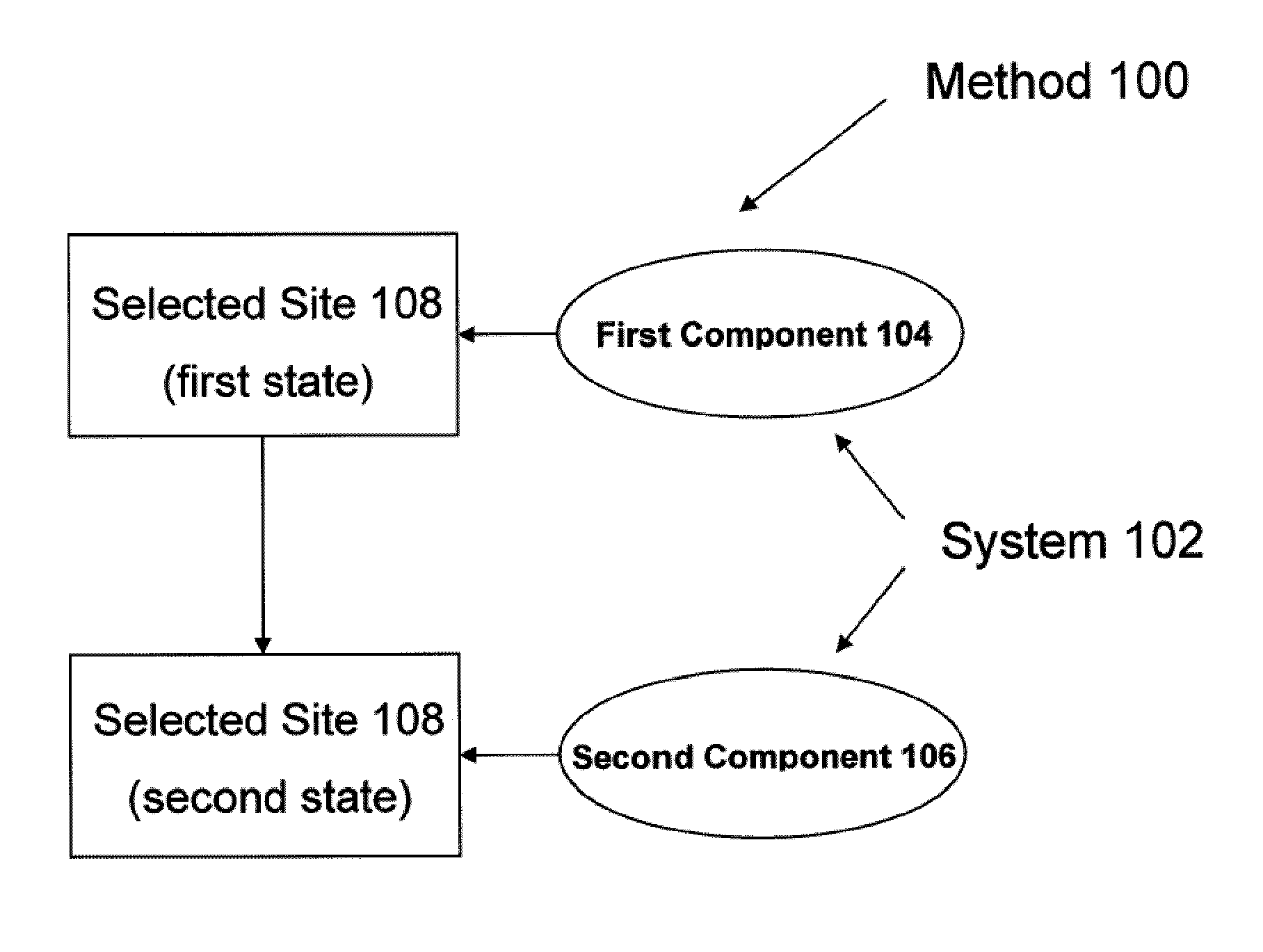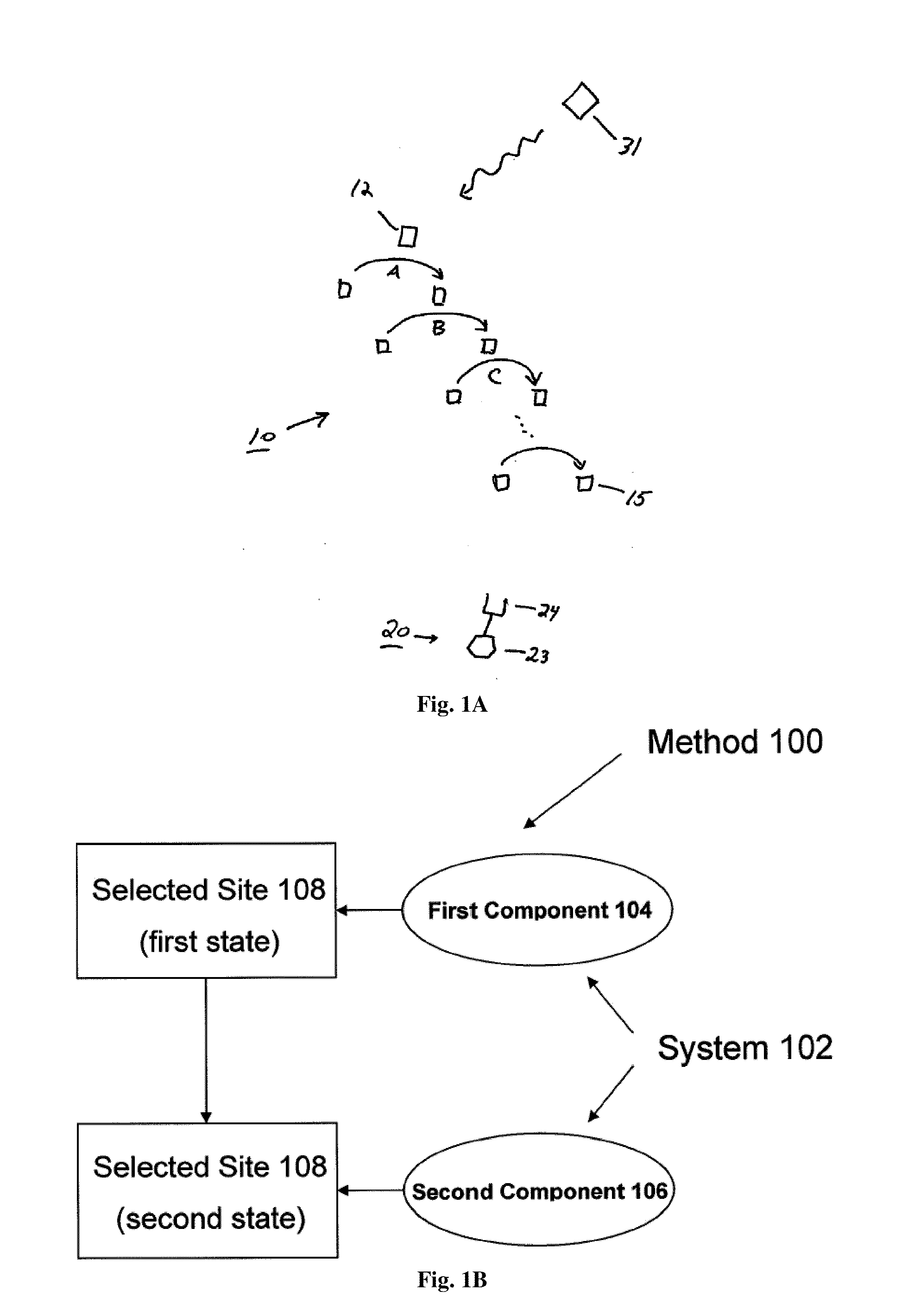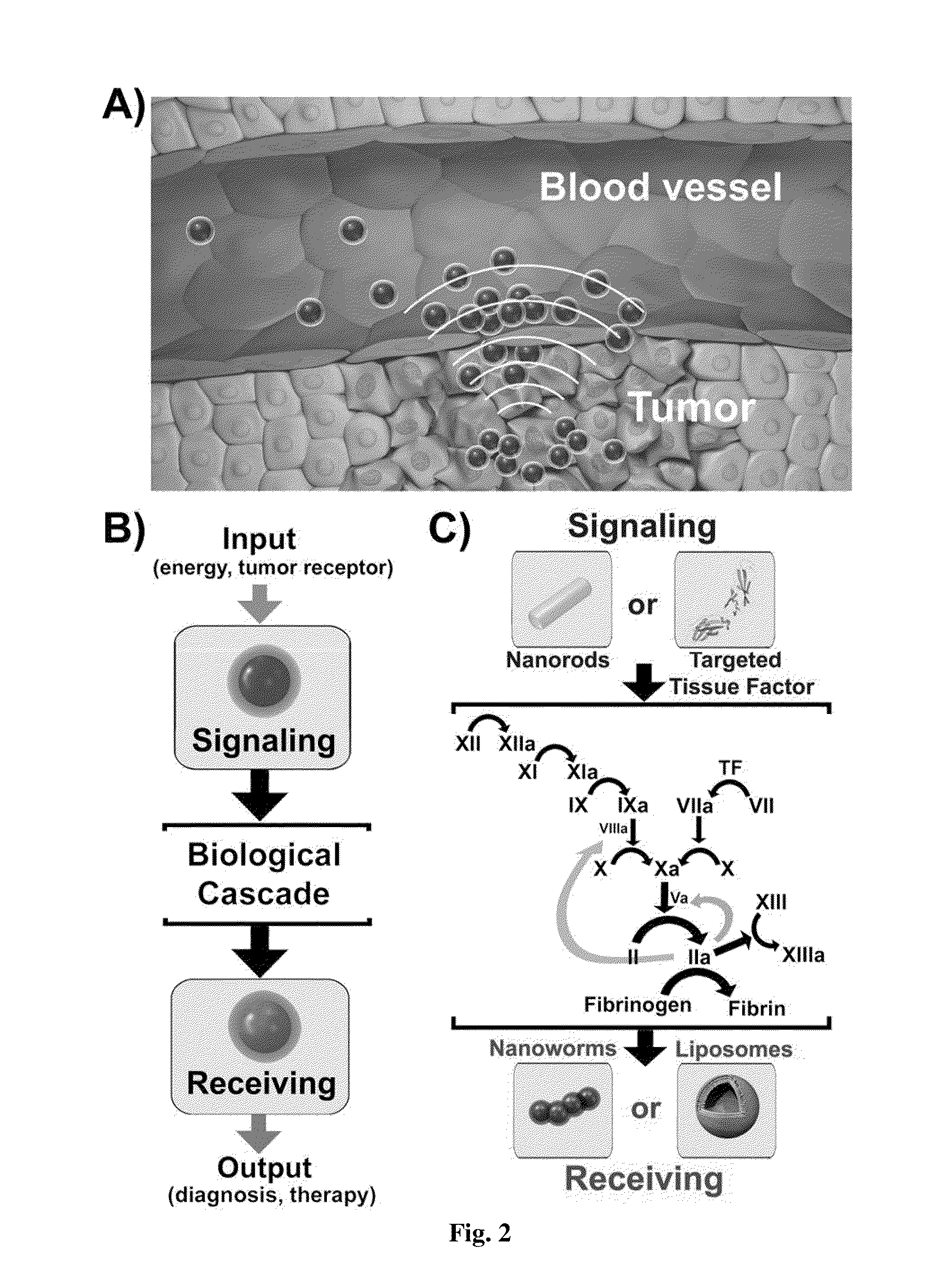Methods and systems for treatment and/or diagnosis
a technology of methods and systems, applied in the direction of immunological disorders, drug compositions, peptides, etc., can solve the problem of not great increase in concentration in a particular location
- Summary
- Abstract
- Description
- Claims
- Application Information
AI Technical Summary
Benefits of technology
Problems solved by technology
Method used
Image
Examples
example 1
[0236]This example describes certain protocols and methods that may be useful in various embodiments of the invention.
[0237]Poly(ethylene glycol)-coated gold nanorod (PEG-NR) synthesis (“signaling module”): PEG-NRs were synthesized as described in von Maltzahn, et al., “Computationally Guided Photothermal Tumor Therapy Using Long-Circulating Gold Nanorod Antennas, Cancer Res., 69(9):2009, incorporated herein by reference in its entirety. Briefly, highly stable, ˜13 nm×47 nm (FIG. 3A) CTAB (cetyltrimethylammonium bromide) coated gold nanorods with longitudinal plasmon resonance at 810 nm (Nanopartz, a division of Concurrent Analytical Inc., Salt Lake City, Utah) coated in 250 micrometer 5 kDa methyl-PEG-thiol (Laysan Bio, U.S., Arab, Ala.) were used. A solution of 5 kDa methyl-PEG-thiol and CTAB-coated gold nanorods was gently mixed at room temperature for 1 hour and dialyzed exhaustively against ultrapure water (18 megohm cm−1) via cellulose ester membrane dialysis (Spectrapor, Ranc...
example 2
[0252]This example illustrates synthetic components that were engineered to communicate with one another in vivo and amplify disease targeting. These systems were composed of signaling components (nanoparticles or proteins) that target tumors and then broadcast the tumor location to receiving nanoparticles in circulation that carry a diagnostic or therapeutic cargo, thereby amplifying their delivery. To facilitate robust communication between components, these systems were designed to harness ubiquitous biological cascades in plasma to transmit and amplify communications. It was shown that communicating nanoparticle systems can be composed from multiple types of signaling and receiving components, can transmit information via multiple molecular pathways, and can target over 40-fold higher doses of chemotherapeutics to tumors than non-communicating system components.
[0253]This example illustrates two-part nanosystems where signaling components target tumors and then broadcast the tum...
example 3
[0283]Having developed signaling and receiving components and characterized their function in isolation as discussed above, this example illustrates the ability of integrated nanoparticle systems to communicate and amplify tumor targeting in vivo (FIG. 5A). First, the ability for communication between PEG-NR signaling and FXIII-NW receiving components to amplify tumor imaging was tested.
[0284]PEG-NRs (or saline) were intravenously-injected into mice bearing bilateral MDA-MB-435 tumors. After NR clearance from circulation (72 hours), mixtures of FXIII-substrate and control-NWs labeled with distinct near-infrared fluorochromes were co-injected intravenously, followed by near-infrared irradiation of the entire right flank of the mouse (˜0.75 W / cm2, 810 nm, 20 min) under infrared thermographic observation. At 96 hours, the entire mouse and then the individual explanted organs were fluorescently imaged (FIG. 5B, which shows the experimental timeline for testing communicating nanoparticle...
PUM
| Property | Measurement | Unit |
|---|---|---|
| diameter | aaaaa | aaaaa |
| diameters | aaaaa | aaaaa |
| diameters | aaaaa | aaaaa |
Abstract
Description
Claims
Application Information
 Login to View More
Login to View More - R&D
- Intellectual Property
- Life Sciences
- Materials
- Tech Scout
- Unparalleled Data Quality
- Higher Quality Content
- 60% Fewer Hallucinations
Browse by: Latest US Patents, China's latest patents, Technical Efficacy Thesaurus, Application Domain, Technology Topic, Popular Technical Reports.
© 2025 PatSnap. All rights reserved.Legal|Privacy policy|Modern Slavery Act Transparency Statement|Sitemap|About US| Contact US: help@patsnap.com



